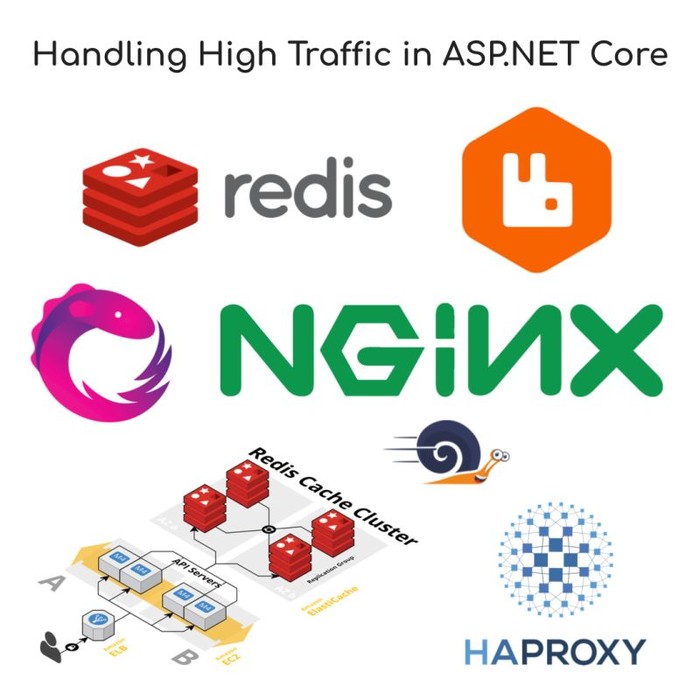Handling High Traffic In ASP.NET Core
3 min read · — #dotnetcore#scalability
The following are tools and techniques that will help you handle high traffic in a .NET Core app:
1 - Caching: Caching stores frequently accessed data in memory or on disk to reduce database load and improve response times. Tools & Techniques:
- Redis [https://lnkd.in/ex7agR2g]
- Memcached [https://lnkd.in/eBXBxFTj]
- ASP.NET Core Response Caching Middleware [https://lnkd.in/egf5yw-B]
- In-Memory Cache [https://lnkd.in/eXFUDAnu]
2 - Load Balancing: Load balancing distributes incoming network traffic across multiple servers to improve application performance and availability. Tools & Techniques:
- Nginx [https://lnkd.in/ewKW36Xu]
- HAProxy [https://lnkd.in/eM9pcRu6]
- Azure Load Balancer [https://lnkd.in/eSwSZ4C2]
3 - Asynchronous Programming: Asynchronous programming runs multiple tasks concurrently, allowing the application to handle more requests and improve performance. Tools & Techniques:
- Task Parallel Library (TPL) [https://lnkd.in/eZ4D8Mpn]
- async/await [https://lnkd.in/e_AZEewx]
- Reactive Extensions (Rx) [https://lnkd.in/e9QVJUgU]
- Actor Model [https://lnkd.in/eeJMKRaK]
4 - Message Queues: Message queues decouple tasks and process them asynchronously, improving application performance and scalability during traffic spikes. Tools & Techniques:
- RabbitMQ [https://lnkd.in/e9naBiiR]
- Azure Service Bus [https://lnkd.in/en-CZRye]
- Google Cloud Pub/Sub [https://lnkd.in/e2BtrShR]
- Kafka [https://lnkd.in/eSQ4NZDm]
5 - Profiling and Performance Tuning: Profiling your application and optimizing performance can help you identify and fix performance bottlenecks. Tools & Techniques:
- BenchmarkDotNet [https://lnkd.in/eRAUgxcx]
- JetBrains dotTrace [https://lnkd.in/e2WrUcqR]
- New Relic [https://lnkd.in/eq-7Pwea]
These are just some of the tools and techniques for handling high traffic on your apps. Note that sometimes it is not necessary to use these tools and methods and better performance can be achieved with simpler methods.
